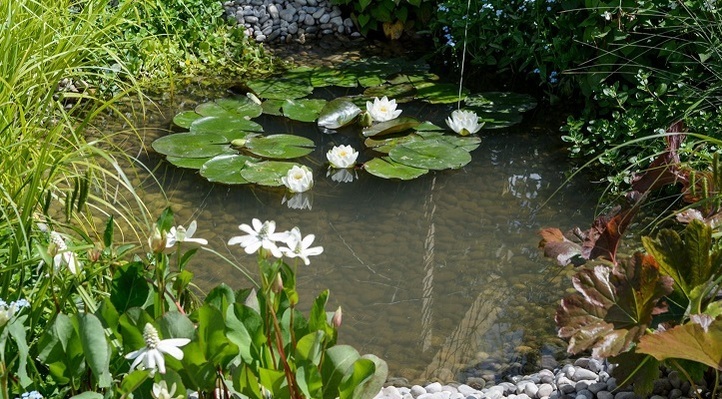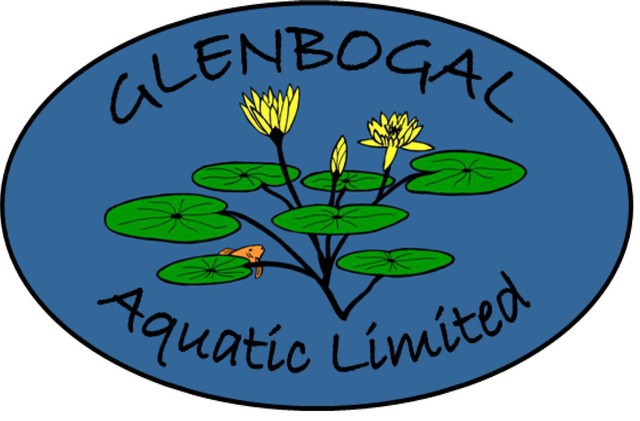Plant & Pond Care
Do you want a clean pond and healthy plants? The Reason for Green section will provide all the information you need to keep your plants, pond and fish healthy and happy.

The Reason for Green
Green water, Slime and other forms of algae
Some people think of ponds being lime green smelly areas of water where you can’t see the fish. Unfortunately this is sometimes true however it is not the way it has to be.
What makes algae grow?
Most algae thrive in conditions of excess light, warm temperatures and most importantly a source of food.
Nutrients in the form of incorrect fertilisers, over fertilising, fish waste, overfeeding of fish food, incorrect planting media and not enough plants in a pond or water garden are some of the common causes of algae issues in ponds.
Some basic common sense will often help the individual find the cause or causes to their problems of algae.
The time of the year will often trigger most problems as water temperatures increase, so does the risk of algae.
If the pond plants haven’t been prepared for the coming season algae will grow faster, this is partly due to the plants not competing effectively with the algae for excess nutrient.
Hints for preventing Algae growth
Pre season (before September) maintenance is recommended. This includes the following:
Re-pot fast growing aquatic plants. These plants compete directly with algae for nutrients. If they are root bound and weak from overgrowth, division or re-potting will allow the plants to grow to their best abilities. This allows the plants to compete better against all algae varieties.
-
Remove all winter windfall, dead leaves, and other organic foliage from the pond
-
Decorative stone, rocks or pebbles in the bottom of the pond should be removed (unless you want to clean them regularly). These stones trap rotting organic material, fish waste and windfall causing a consistance supply of nutrient. It is a myth that stones on the bottom will provide a home for nutrient feeding bacteria - these bacteria need a constant supply of oxygen to live so unless you have air pumping through your pebble/stone base all you have is a problem.

-
Slowly increase feed quantities for fish and plants as they both increase activity with warmer temperatures
-
Do not use any non pond specific fertiliser as they can be very high in algae promoting nutrients (like Phosphate and Nitrate)
-
Potting mixes generally contain Osmocote slow release fertilizer which is great for algae growth. It is also high in peat and pumice which are floating materials. Do not use.
-
Use only specific aquatic soil for planting. At Glenbogal Aquatic we blend our own soil using no added nutrients. It is screened through 10mm mesh so free flows and has clean sand added. This can be purchased in 5, 10 and 20 litre bags.
-
Compost and other organic soils will also lump huge nutrient loads into ponds and also should be avoided.
-
Overstocking of goldfish is a very common mistake. They are very beautiful especially when they are racing around in large schools. To look great and be active goldfish consume large volumes of food which in turn results in big loads of waste. This waste is broken down and contributes to nitrates that feed algae. Keep fish numbers low.
-
Plant all pond plants in water garden baskets. These are full of very small holes which allow the plants roots to push through and feed on nutrients from the water.
-
Planting to cover about 75% of the surface area is advisable. This reduces sunlight and helps keep the water cool. This also supplies a natural balance to the pond by having a good number of plants to compete with algae for food and light.
-
Good quality fish foods are better balance and are generally lower in phosphates and nitrates. Check the packet before you buy.
If your pond has been formed from concrete you need to make sure this has been sealed properly. Sealing of the concrete is imperative. Concrete or lime based ponds or containers that have not been sealed will continuously leach lime into the water causing a constant food supply for algae. The most common algae formed is blanket weed that has a consistancy of candy floss.
-
Do not use any type of concrete blocks in your pond, we suggest terracotta as they are kiln fired and clay is nutrient free.
Algae treatment
If you already have problems with algae in your pond and have checked through and implemented the preventative measures above, the following are treatment options:
The first thing to be considered is the use of chemical killers. These products generally work, however they do not usually prevent re-growth. This often occurs as the algae dies, it breaks down. This in turn produces a further source of food for more algae. It is also worth considering that if algae grew to start with the conditions suited it and algae killers don’t often alter water quality for the better.
Once you have addressed the factors that have caused algae to grow the following options are suggested

Ecopond Barley-Bio - inhibits the growth of algae and blanket weed whilst enhancing natural water chemistry.
Working with Cloudy Water treatment (a flocculant) that binds all the heavy particles together to drop them to the bottom on the pond
Then Mud Muncher (a microbial composting liquid) to increase the breakdown of sludge, mud and debris into nutrient.
Bio-Barley controls the growth of algae so the aquatic plants have access to nutrients for growth and blooms.
The use of a UV clarifier in conjunction with a biological filter will also help resolve algae issues and this information is covered in the Filtration section
Back to Plant & Pond Care
